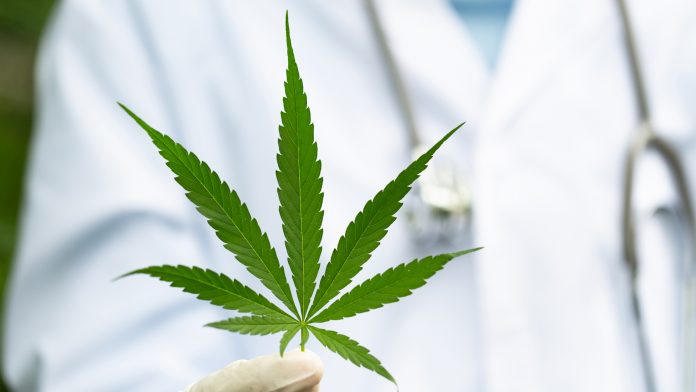
Health Europa Quarterly spoke to Dr Mikael Sodergren who leads the Medical Cannabis Research Group at Imperial College London about his research on novel cannabinoid therapies targeting pain.
Almost 28 million adults in the UK are affected by chronic pain, a type of pain that persists for three months or longer. The prevalence of chronic pain poses a huge economic burden for the healthcare system, particularly because the varying symptoms of pain can be difficult to manage. For many years, medical cannabis has garnered interest as an alternative therapy for a range of health problems, including pain. However, a lack of robust research, as well as inconsistencies across medical cannabis guidelines and regulatory procedures, have hindered the potential use of medical cannabis as an alternative treatment.
In an effort to provide high-quality research to support the use of medical cannabis or cannabinoid therapies in pain management, the Medical Cannabis Research Group (MCRG) at Imperial College London is investigating the efficacy and mechanism of action of cannabinoids and developing novel cannabinoid therapies targeting inflammation and cancer-related pain. To find out more about the group’s research activities, Health Europa Quarterly spoke to the head of the MCRG, and consultant hepatopancreaticobiliary surgeon, Dr Mikael Sodergren.
Can you tell me how you became interested in medical cannabis research?
I have had an interest in and followed the medical cannabis literature for more than a decade, initially due to patients enquiring about medical cannabis for post-operative pain relief. One of my main research interests over the last decade has been immunomodulatory techniques in pancreatic cancer and it was through this route that my research in medical cannabis began in earnest. It has become apparent that CBD has quite significant anti-inflammatory effects, so I began to study this mechanism of action, as applied to pancreas cancer, in the lab about five years ago.
How did the MCRG come to be formed and what are the group’s main objectives?
The MCRG was formed to consolidate the medical cannabis research themes at Imperial College, centralise expertise in specific research areas and leverage infrastructure and regulatory licenses to facilitate translational research with direct clinical relevance. We are interested in the evaluation and development of novel cannabinoid therapies targeting, firstly inflammation and cancer, with a current focus on pancreatic ductal adenocarcinoma, and secondly acute/post-surgical, neuropathic, and cancer-related pain. We are also interested in clinical-outcome-based research and the use of Real World Evidence in cannabinoid drug development.
Why did you and your team choose to focus on inflammation, cancer, and pain in particular? Can you outline some of the key issues associated with traditional cancer and pain treatments and how these could be mitigated with novel cannabinoid therapies?
I have a longstanding research interest in immunomodulatory techniques, mainly applied through surgical devices. The relatively recent introduction of immunotherapy in the form of checkpoint blockade into clinical practice has dramatically changed the way that we approach cancer treatment in general. Furthermore, pancreatic cancer is especially difficult to treat due to its hostile tumour microenvironment and aggressive phenotype, but it does have the immune cell composition within or close to the tumour to, in theory, be vulnerable to immunological therapies.
It has become clear to me that immunological combination therapies represent the most attractive option to maximise any clinical benefit and cannabinoids have shown some very interesting properties to complement currently available therapies. Globally, there has been a paucity of basic scientific research on cannabinoids in cancer and we are only just starting out on this process, which makes it novel and exciting. Our group are currently trying to map out the molecular signalling pathways of major cannabinoids in pancreatic cancer so that we can use these data to target therapies most effectively.
How much do we know about the impact of different cannabinoids on pain in the body? Can you discuss how you and your team are conducting research in this area? What is the significance of exploring the entourage effect?
Globally, we do have some understanding of how cannabinoids signal through various pain pathways however we are learning all the time. Recently we have shown how CBD exerts analgesic effects through TRPV1 receptors at physiological doses and we established dose response data that can be extrapolated into human trials. Interestingly, we have set up an in vitro pipeline to evaluate all the compounds in the cannabis plant that are thought to have analgesic properties. We have evaluated the effect of combining different cannabinoids with some really interesting findings. For instance, we have found that by adding CBG to a combination of THC and CBD we can decrease the dose of THC to produce a similar effect in vitro. This is clearly important and applicable in clinical practice where a reduction in any adverse events associated with THC would be welcome. It is also through this pipeline we are exploring the so-called entourage effect and we have some really interesting data on various terpene combinations which I hope will be published soon.
Are there any significant limitations or challenges associated with the research you are conducting?
Research is always challenging, and medical cannabis research is no different! There are obvious regulatory aspects such as licenses that are necessary to conduct research in what is classed as a narcotic outside of medical practice. Due to the relatively recent change in UK law, there has traditionally not been funding available to conduct this kind of research however we are seeing this change, for example with themed calls from NIHR into cannabis-based clinical trials.
How do you foresee medical cannabis research evolving in the next few years?
I hope that we see several centres of excellence around the world that can collaborate on what is a vast research topic. When I lecture medical students on this topic, I often put up a slide that shows the number of different permutations there are in terms of combinations of the known 120 or so cannabinoids in the plant, this is without considering other potential contributory compounds such as flavonoids and terpenes. The number that comes out of this calculation does not fit well on the slide which goes some way to illustrating how much work we have left to do.
I do think that more and more researchers will become interested in cannabinoid therapies and with the inevitable licensing of more cannabis-based medicines in clinical practice, I am hopeful this process will be accelerated and together we will show how our research has tangible and clear benefits on human health.
Mr M H Sodergren MBChB (Hons), DIC, PhD, FRCS
Head of Medical Cannabis Research Group
Clinical Senior Lecturer in Surgery
Imperial College London
m.sodergren@imperial.ac.uk
www.imperial.ac.uk
https://twitter.com/ImperialMCRG
This article is from issue 22 of Health Europa Quarterly. Click here to get your free subscription today.



















